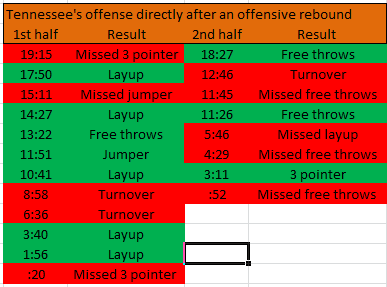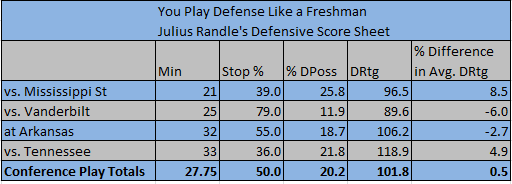Handicapping the SEC Race Two Weeks In
Posted by Brian Joyce on January 21st, 2014And they’re off … Florida has jumped out as the early leader in the SEC race, but it’s still early enough for other teams to catch up with some adjustments. While the records at the top of the conference indicate that the regular season crown could be up for grabs, there will be only three teams in serious contention to finish at the top after an 18 game schedule. After four games in conference play, we handicap the remainder of the SEC regular season and areas to watch for if each contender are to make a run at the number one spot.
The Favorite
Florida is in the lead, and it’s hard to imagine a scenario where Billy Donovan’s squad isn’t around for a photo finish at the end. The Gators are 4-0, and appear to be solid both at the O’Connell Center and away from it in the unfriendly confines of the SEC’s best venues. Florida was tested early on without its best player in Casey Prather on the road at Arkansas but still came out with an overtime win. The best news for the Gators right now is that they were still efficient even without Prather in the lineup.
This team is obviously better with its best player in the game, but UF isn’t solely dependent on him like it has been in the past with players like Erving Walker and Kenny Boynton. Prather returned against Auburn with 21 points, six rebounds, and a 148 offensive rating, but if he needs to sit for a few minutes Donovan can be confident that he can continue to get highly efficient play from the rest of his team. The Gators’ efficiency with or without their best player in the lineup makes this team a tough out through conference play, and Dan Hanner agreed when he analyzed the Gators’ lineup.The Top Contender
Kentucky slipped up at Arkansas where it watched its opportunity to win soar in unscathed for a tip in slam from the weak side. As every analyst and pundit in the nation attempts to solve the Wildcats’ primary dilemma (is it three point shooting, lack of heart, poor free throw shooting), it is ultimately inconsistency that is the dominant issue preventing UK from sprinting around the turn. Kentucky is a team made up predominantly of freshmen, after all, so it not far-fetched to see erratic play at the heart of the team’s ailments. One such example is in the defense of Julius Randle.
Randle had his hands glued to his thighs in the first half against Arkansas, but came out of the locker room with his arms held high for the rest of the way. It made a big difference as the 6’9” freshman came up with a couple of hustle plays and two of the most demonstrative blocks we’ve seen from him all year. But this sort of variation in his defensive desire has not been uncommon. Randle’s defensive score sheet from the first four games of conference play reveals he is an average defender who has drastically differing levels of involvement and efficiency on the defensive end of the court. What happens if Kentucky plays at full energy for 40 minutes? We might not really know until March, but that might be enough for John Calipari’s crew to come out the kings of the SEC.
The Longshot
Tennessee is the dark horse that could surprise everyone if Cuonzo Martin can figure out his point guard issues, somehow convince Jordan McRae that contested three point jumpers are not his friend, and develop Jarnell Stokes’ mid-range game into a moderate threat. The Vols are a good rebounding team, especially on the offensive end as demonstrated by their 20 offensive boards against Kentucky, but that doesn’t always translate into offensive success. Tennessee only converted half of their offensive rebounds into points as you’ll see in this very colorful display where I charted each of the Vols’ offensive possessions immediately following an offensive rebound. Green indicates a converted opportunity, whereas red indicates a miss or turnover.

Tennessee grabbed 20 offensive rebounds on Saturday against Kentucky, but only scored on 10 of those opportunities.
Tennessee isn’t a great shooting team to begin with, so failing to convert on its one big advantage over the Wildcats makes it very difficult to pull off the upset. However, the SEC isn’t loaded with strong defensive rebounding teams, and if UT continues to dominate in that area then it has a chance to overcome its shooting woes. Two Volunteers, in particular, have excelled on the glass. Stokes is currently 19th in the nation, while his partner in crime, Jeronne Maymon is two spots higher at 17th. Two teammates haven’t finished in the top 20 of offensive rebounding percentage since Othello Hunter and Greg Oden did it for Ohio State in 2007. And well, that team did okay.















































